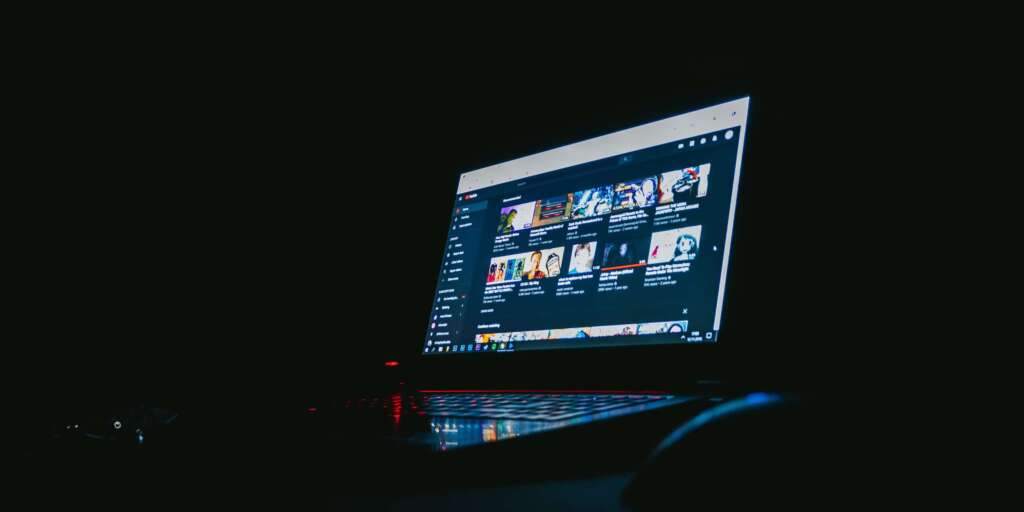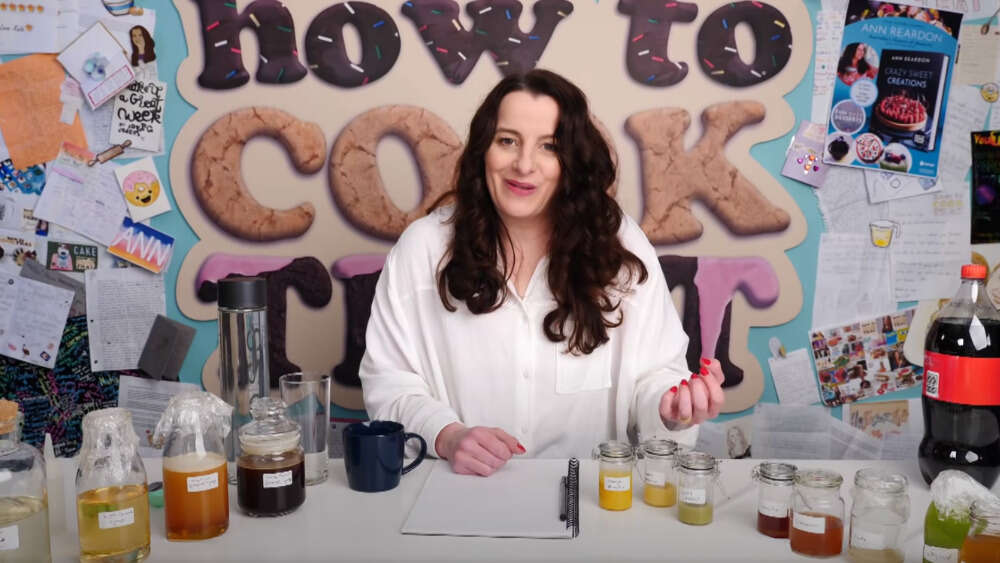YouTube influencer Ann Reardon takes on the internet
What every digital consumer needs to know
Ann Reardon is a YouTube superstar whose channel, How to Cook That, boasts almost 5 million subscribers, as well as national and international media coverage. A qualified food scientist and dietician, Ann’s most popular videos include mind-bending dessert creations, which have attracted millions of views.
Ann is also a faithful Christian who has served for many years in youth and young adult ministries.
By internet standards, Ann has had a long, successful career and relationship with Google and YouTube since starting her channel in 2011. Having spent over a decade immersed in digital culture as a content creator and influencer, Ann has come to understand the significance of trust, the business of digital platforms and human nature online.
“If you made a ‘how to’ video, it was to help others. It’s moved from that now because people can make money from their content.” – Ann Reardon
“When YouTube started, it was about the audience. Creators weren’t making money on the platform. If you made a ‘how to’ video, it was to help others. It’s moved from that now because people can make money from their content,” Ann tells Eternity.

How to Cook That | YouTube
In response to the sudden popularity of fake tutorial-style videos from companies such as 5-Minute Crafts, Blossom and So Yummy, Ann began creating videos to test and debunk dubious crafts and hacks.
Misinformation, disinformation and AI algorithms
Since the introduction of YouTube’s AI algorithm in 2016, Ann has noticed a rise in the virality of gimmicky tutorials and hack-style videos. These videos feature numerous short tutorials with upbeat music. Despite the light-hearted tone of the video, reports were surfacing of people damaging their property, hurting themselves and even of deaths resulting from people following the tutorials.
Ann explains that “80 per cent of what people watch on YouTube is what’s recommended to them by the algorithm.” Despite the risk and misinformation, YouTube’s AI algorithm continued to prioritise and suggest these videos.
“People were shocked as to why would anybody intentionally make incorrect information,” says Ann. For example, a video would show a person spilling spaghetti sauce on the carpet. They show the person putting shaving cream on the stain and leaving it for 30 minutes. When they wipe off the shaving cream, the stain is gone. The reality is that they’ve switched the carpet. This is disinformation. “It’s not helping anyone. It’s to make money through YouTube advertising,” explains Ann.
“Content farms just took off and started doing very well.”
One hack in the series of ten in the video may work, which builds your trust and then they throw in fast, fake hacks, explains Ann. With the AI algorithm prioritising newness and longer videos, these videos get lots of views and generate great profits for content companies.
Ann shares that these types of videos can be produced by ‘content farms’, which are usually set up in countries where wages are very low. They can devote an entire floor – with desks everywhere and people filming fast tutorial videos – to publishing up to 30 videos a day, she says. This kind of stuff was around before 2016, explains Ann, “but it didn’t do well until YouTube introduced the AI algorithm. Content farms just took off and started doing very well.”

Discerning credible content
The guiding principle for discerning the credibility of online content seems to be: do your research.
Ann admits that it’s getting harder to distinguish between reliable and unreliable content. Companies are producing professional-looking content and can use AI to generate more natural-sounding voiceovers, says Ann.
“There’s no formula to tell if it’s fake. You have to look at who the channel is owned by. Check what their other channels are, what their other content is like,” she advises. Ann suggests “looking at their qualifications as well. Do they have any qualifications in the area they’re talking about?”
AI has infiltrated comments too. “You might have 200 comments that are from one person using AI chatbots to generate that conversation,” Ann says.
A faith perspective on the future of the internet
“I think one of the main concerns with AI taking off is that it’s going to make the internet useless, because is it going to be so filled with misinformation that you can’t trust anything,” says Ann.
Despite the murkiness of the future, Ann asserts, “I don’t think it’s something that we need to be fearful of at all as Christians.” In Ann’s estimation, “If the internet, which has been this useful resource, becomes useless due to being flooded with incorrect AI-driven content that looks credible, I find it a relief to be able to pick up the Bible. I know that is true.
“It’s almost as if Google has become a lot of people’s god. Any question they have they go to Google,” says Ann. “If all that becomes untrustworthy, how do we know what’s true anymore? God is real, God is true and that doesn’t change. I think having something that is truthful and real and reliable, when everything else is unreliable, is grounding.
“If anything, I think these problems and mistrust should be a motivator to talk to more people about God.”
“If you open a platform and start scrolling, you are essentially saying that you trust Google or TikTok or Meta for what gets put into your head.”
How to avoid the ‘echo chamber’ effect
When it comes to addressing the echo chamber effect, Ann says the most important thing is to be intentional about choosing what you watch. YouTube and social media are very good at distracting you. “Their money game is keeping you on the platform for as long as possible, watching addictive content,” says Ann.
“It’s hard not to click on those suggested videos, because they’re using AI to find out psychologically what you – you specifically – are most likely to click on.”

Leon Bublitz | Unsplash
Ann advises that when you go on YouTube, only watch content that you search for and not the suggested videos down the side. “If you open a platform and start scrolling, you are essentially saying that you trust Google or you trust TikTok or Meta/Facebook for what gets put into your head,” she warns.
“I could confidently say that I believe their main motivator is money – it’s not your best interest. It’s not what is going to grow you as a person,” says Ann.
The power of your comments
She emphasises being careful and thoughtful with your comments: “A lot of people have more than one personality; they’re completely different online to who they are in real life.”
Ann notes that “there’s a current thing where people seem to delight in taking someone down online. Cancelling people has become a sport.”
Despite comments being faceless, Ann urges us to remember we are engaging with real people. “How would you speak to a person if they were face to face? Being polite, having good manners, being forgiving, being kind and giving people the benefit of the doubt. If you would do that in real life, then do that online,” she says.
When you see content that’s incorrect or that you don’t agree with, Ann suggests that you edit your comment before you hit publish. Ann believes that many people responded out of emotion without considering how hurtful or aggressive their comments may seem to others. “It’s hard when it’s something that you believe in and or that’s offended you or when you feel attacked,” she empathises.
Ann advises “writing your response, to help you process that emotion. Then read it back and consider, ‘Why did that trigger me? Can I write this in a more educational or less accusing way?’” She suggests that if the content is factually incorrect, reach out to the creator graciously with another source or perspective on the topic.
Parenting our children through digital culture
A lot of parents that Ann speaks with opt out of the responsibility of guiding their children’s technology use because they are not tech-savvy or they can’t keep up. “I understand that because it changes constantly. But we can’t afford to opt out because technology is such a huge part of our kids’ lives,” says Ann.
She notes that their social world, friendships, bullying and feeling excluded are all magnified for children because they can see what everyone is sharing online.
“Think about technology as another room. You have to look in it, even though it’s not as easy as just opening the door.”
For parents of younger children, Ann recommends researching “apps that help you monitor what they’re watching on the internet. Apps that set time limits on access. Apps that will let you switch off access overnight so that they’re not messaging through the night.” She stresses that setting these boundaries as a parent is important because the fear of missing out is a big motivator for children and teens when it comes to staying digitally connected.

Eren Li | Pexels
Ann highlights that unfettered access to devices can allow children and teenagers develop poor sleep habits, as well as consuming unhelpful or harmful content during their formative years.
“At the very least, look at the battery usage in the settings of your kid’s smartphone. An iPhone will tell you what apps have been used for how long,” says Ann.
“We don’t just expect them to clean their room and never check,” says Ann. She challenges parents to “think about technology as another room. You have to look in it, even though it’s not as easy as just opening the door. You have to figure out how to do that. It’s important.”
Looking behind the door
In Ann’s estimation, digital boundaries are not just for teenagers. “Look at your own phone battery usage. Look at how much time you’ve spent scrolling on different apps. It’s usually a lot more than you thought it was.” She suggests you “challenge yourself to decrease those times. Replace them with something that is proactive.”
“If you go back a generation, the saying was ‘garbage in, garbage out.’ People were cautious of what they watched on TV and what they listened to,” explains Ann. “I think the generation coming through thinks it doesn’t matter what you watch, it won’t affect you.”
Ann offers readers this challenge: What can you cut down in your digital usage and what could you replace that with? How much of a difference will that make to your life in a year’s time?
Email This Story
Why not send this to a friend?


